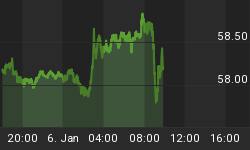The following is part of Pivotal Events that was published for our subscribers July 8, 2015.
Credit Markets
As the old saying goes, "Credit is suspicion asleep". Jim Grant calls it "Money of the mind". While the total outstanding amounts to a much bigger market cap than for global equities, credit can be rather ephemeral in price and even existence.
Global credit markets seem to be in the early stages of another "Ephemeral Event". The term "another" is a deliberate attempt to point out that it will not be a "Black Swan" event. Taleb's thesis implies that magnificent financial collapses are "improbable" and therefore unpredictable. It's strange that he did not observe that great financial collapses have had similar setups.
From 1720 until 2007, there has been six great financial bubbles. Each had similar characteristics on the climax and collapse. Including action in the credit markets and utterances by governments and/or government institutions.
US credit spreads were expected to narrow into "around May-June" and because credit markets have become so speculative the expected reversal could be the one that ends the global bubble.
In real time this worked for us in 1998 (LTCM), 2000, and 2007.
Our special study "Widows and Orphans Short" sent out yesterday had charts covering the subject. Spreads have reversed to widening.
Long-dated Treasuries (TLT) were expected to rally as various speculations stalled out and then collapsed. This was noted two weeks ago and last week we thought that 120 was possible.
The Daily RSI got down to 28 and this week's advance takes the TLT above the 50-Day ma, which is constructive. The target now becomes the resistance level at 123.
Junk (JNK) rallied with narrowing spreads to 31.10 in May and on the decline took out the 50-Day ma in early June. The 200-Day was violated in the middle of June and the latest rally stalled at said moving average. The downtrend is established and the panic lows of December seems not improbable.
Listen to the Bob Hoye Podcast every Friday afternoon at TalkDigitalNetwork.com
















